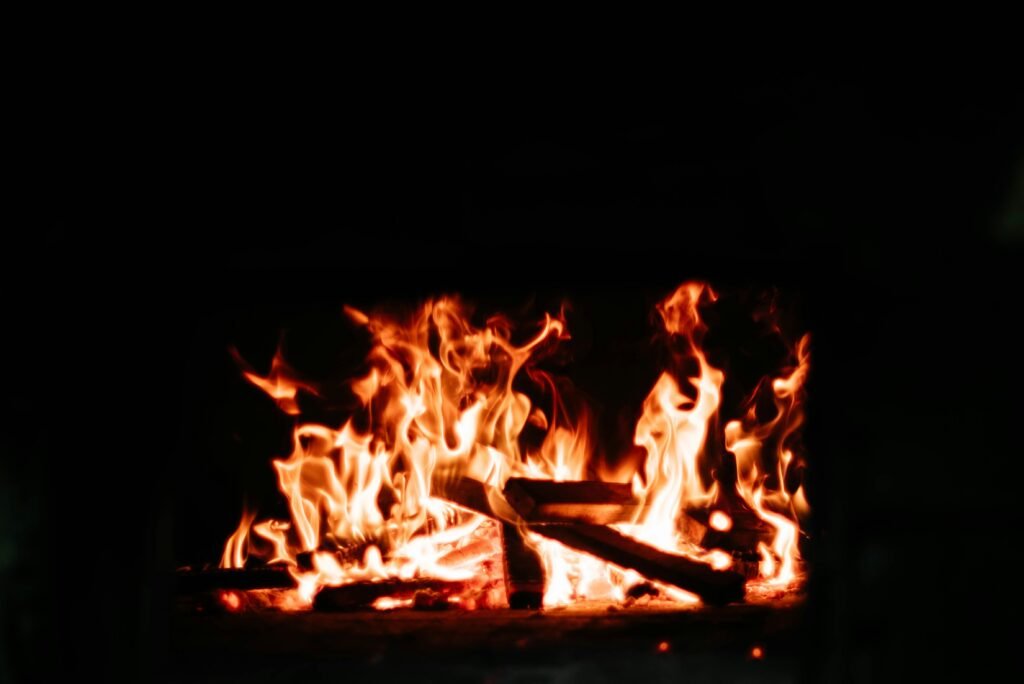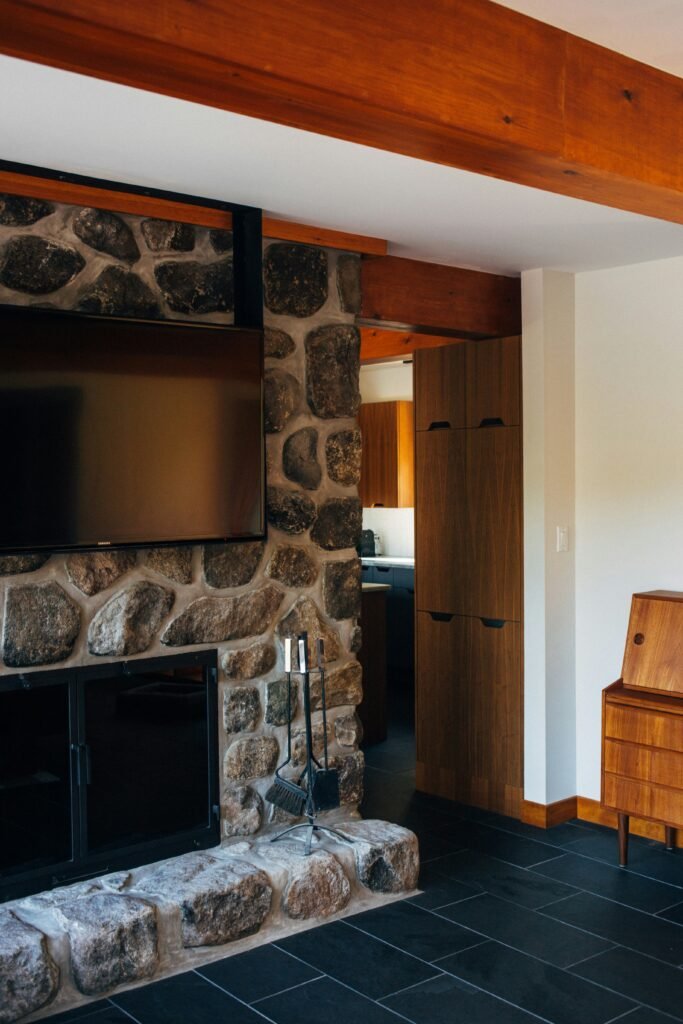Imagine a cozy winter evening spent curled up by a crackling fire, the warmth enveloping you and the soft glow illuminating your surroundings. Now, imagine the disappointment and frustration of a malfunctioning fireplace, leaving you shivering in the cold. To ensure that your hearth remains a source of bliss all winter long, proactive fireplace maintenance is crucial. By taking preventative measures, such as regular cleaning and inspections, you can ensure the safety, efficiency, and longevity of your fireplace, allowing for uninterrupted moments of warmth and tranquility. Discover the importance of proactive fireplace maintenance and how it can contribute to a happier hearth in our article, “The Importance of Proactive Fireplace Maintenance.”
Importance of Fireplace Maintenance
Ensures Safety
When it comes to maintaining a fireplace, safety should always be a top priority. Regular maintenance and inspections play a vital role in ensuring that your fireplace functions properly and does not pose any risks to your home or loved ones. By taking the time to properly care for your fireplace, you can prevent potential hazards such as chimney fires, carbon monoxide leaks, and unsafe ventilation. Regular maintenance allows you to identify and address any safety issues promptly, providing you with peace of mind and a cozy, worry-free environment for enjoying your fireplace.
Prevents Costly Repairs
A well-maintained fireplace can save you from costly repairs down the road. By investing in regular inspections and cleanings, you can catch any minor issues early on before they escalate into major problems. For example, a small crack in the firebox or chimney can quickly worsen if left unaddressed, leading to expensive repairs or even the need for a complete replacement. By staying proactive with maintenance, you can nip these issues in the bud, potentially saving you hundreds or even thousands of dollars in the long run.
Improves Energy Efficiency
Another significant benefit of regular fireplace maintenance is improved energy efficiency. Over time, fireplaces can become less efficient due to factors such as creosote buildup, blockages, or damaged components. This can result in heat loss, decreased airflow, and increased energy consumption. By regularly inspecting and cleaning your fireplace, you can ensure that it operates at optimal efficiency, allowing you to maximize the heat output while minimizing energy waste. This not only helps keep your heating bills in check but also reduces your carbon footprint, making your fireplace both eco-friendly and cost-effective.
Regular Inspection and Cleaning
Checking for Obstructions
Regularly checking for obstructions is crucial to maintain the proper functioning of your fireplace. Obstructions such as bird nests, debris, or even small animals can block the airflow, causing the smoke to back up into your home. This can lead to poor indoor air quality and pose a serious health risk. By inspecting your chimney and flue regularly, you can identify and remove any obstructions, ensuring that your fireplace operates safely and efficiently.
Removing Creosote Buildup
Creosote buildup is a common issue in wood-burning fireplaces. Creosote is a highly flammable substance that forms as a byproduct of burning wood. Over time, it can accumulate on the walls of your chimney, increasing the risk of a chimney fire. Regular cleaning and removal of creosote buildup are essential to maintain the safety of your fireplace. Hiring a certified chimney sweep is highly recommended, as they have the expertise and tools to effectively remove creosote and ensure that your chimney is safe and clear.
Inspecting and Cleaning Chimney
Regular inspection and cleaning of your chimney are vital to maintain its structural integrity and prevent any potential hazards. During an inspection, all components of the chimney, including the liner, bricks, mortar, and flashing, should be thoroughly examined for signs of damage or deterioration. Any cracks, missing bricks, or faulty flashing should be addressed promptly to prevent further deterioration and potential water damage. Cleaning the chimney involves removing any debris, soot, or creosote buildup that may have accumulated inside, ensuring optimal airflow and preventing chimney fires.

This image is property of images.unsplash.com.
Maintaining the Firebox
Removing Debris and Ash
Cleaning the firebox is an essential part of maintaining your fireplace. After each use, it is important to remove any debris, ashes, or leftover wood to prevent the buildup of moisture or pests. Accumulated debris can hinder proper airflow and potentially cause damage to the firebox. Regular cleaning not only ensures that your fireplace functions efficiently but also keeps it looking clean and inviting.
Sealing Cracks and Gaps
Over time, the firebox may develop cracks or gaps, particularly if it is exposed to intense heat. These cracks can compromise the safety of your fireplace by allowing heat to escape into areas it shouldn’t, potentially damaging your home’s structure. Sealing any cracks or gaps in the firebox with appropriate heat-resistant materials is crucial to prevent heat loss and maintain the safety of your fireplace.
Repairing Damaged Firebricks
Firebricks are used to line the firebox and protect the surrounding structure from heat. However, due to the extreme temperatures they endure, firebricks can become damaged or worn out over time. It is important to regularly inspect the firebricks and replace any that are cracked, chipped, or deteriorated. By ensuring that your firebricks are in good condition, you can prevent further damage to the firebox and maintain the longevity of your fireplace.
Proper Ventilation and Airflow
Inspection of Damper and Flue
Proper ventilation and airflow are essential for the efficient operation of your fireplace. This is why regularly inspecting the damper and flue is crucial. The damper controls the amount of air flowing into the fireplace, while the flue serves as the pathway for smoke and gases to escape. It is important to ensure that the damper opens and closes smoothly and that the flue is clear and functioning correctly. Any obstruction or malfunction can result in poor ventilation, smoke backdrafts, and potential health hazards.
Cleaning Air Vents
Air vents play a significant role in providing fresh air to your fireplace and ensuring proper combustion. Over time, these vents can become clogged with dust, debris, or pet hair, limiting the amount of airflow and reducing the efficiency of your fireplace. Cleaning the air vents regularly helps maintain proper ventilation and ensures that your fireplace operates at its best.
Ensuring Proper Draft
The draft is the force that pulls smoke up and out of your chimney. A weak or inadequate draft can lead to smoke entering your home, causing discomfort and potential health issues. Inspecting and maintaining the chimney cap, spark arrestor, and flue can help ensure proper draft. These components should be free from damage, blockages, or debris that may impede the draft. Additionally, ensuring that your home is properly sealed can prevent unwanted air leaks and drafts, further optimizing the draft of your fireplace.

This image is property of images.unsplash.com.
Maintaining Chimney Cap and Spark Arrestor
Inspection and Repair
Regular inspection and repair of the chimney cap and spark arrestor are important for the overall safety and functionality of your fireplace. The chimney cap prevents rain, debris, and even animals from entering your chimney, while the spark arrestor prevents sparks and embers from escaping and potentially starting a fire. Inspecting these components regularly and repairing any damage or wear ensures that they continue to perform their intended functions effectively.
Preventing Animal Entry
Animals, such as birds or squirrels, may try to build nests inside your chimney, especially during the offseason. These nests can obstruct airflow, cause chimney fires, or release harmful gases into your home. Installing a chimney cap with a mesh screen can prevent animals from entering while still allowing proper ventilation. Regularly inspecting the cap and removing any nests or debris can further ensure that your fireplace remains animal-free.
Preventing Sparks and Embers
A fully functioning spark arrestor is essential to prevent dangerous sparks and embers from escaping your chimney. Sparks can ignite nearby flammable materials, endangering your home and those inside it. Regularly inspecting the spark arrestor and removing any debris or buildup can significantly reduce the risk of sparks and embers escaping and provide you with a safe and worry-free fireplace experience.
Using Quality Firewood and Clean Burning
Selecting Seasoned Firewood
The type and quality of firewood you use can greatly impact the performance and maintenance of your fireplace. Seasoned firewood, which has been properly dried for at least six months, is the best choice. It burns more efficiently, produces less smoke and creosote buildup, and reduces the risk of chimney fires. Using wet or green wood can result in poor combustion, excess smoke, and increased creosote accumulation, ultimately requiring more frequent cleanings and potentially causing damage to your fireplace.
Avoiding Treated or Wet Wood
To ensure clean burning and prolong the life of your fireplace, it is important to avoid using treated or wet wood. Treated wood, such as lumber or painted pieces, releases harmful toxins when burned, posing health risks to you and your family. Wet wood contains a higher moisture content, leading to incomplete combustion, excess smoke, and creosote accumulation. Opting for natural, untreated firewood that has been properly seasoned is essential for both the longevity and safety of your fireplace.
Using Clean Burning Techniques
Practicing proper burning techniques can significantly reduce the maintenance requirements of your fireplace. Here are a few tips to achieve clean and efficient burns:
- Start with a small, hot fire using kindling and newspaper before adding larger logs.
- Avoid overloading the firebox with too much wood, as it can restrict airflow and lead to inefficient burning.
- Allow the fire to burn down completely before adding more wood.
- Use a fireplace grate or fireback to promote better airflow and more even burning.
- Regularly rake the hot coals and ashes towards the back of the firebox for better heat distribution and airflow.
By following these clean burning techniques, you can enjoy a more efficient and hassle-free fireplace experience.

This image is property of images.unsplash.com.
Preventing Water Damage
Checking for Leaks
Water damage can be a significant issue for fireplaces, especially those with brickwork or masonry. Regularly checking for leaks and signs of water damage is crucial to maintain the integrity of your fireplace and prevent costly repairs. Look for any water stains, dripping sounds, or a musty odor around your fireplace. These can be indications of a leak. If you notice any of these signs, contact a professional to inspect and repair any damage before it worsens.
Repairing Damaged Brickwork
Brickwork is particularly susceptible to water damage, as moisture can seep into the porous material and cause it to deteriorate over time. Cracked or deteriorated bricks not only compromise the structural integrity of your fireplace but also increase the risk of water entering your home. Regularly inspecting the brickwork and promptly repairing any damage, such as cracks or missing mortar, can prevent water damage and prolong the lifespan of your fireplace.
Installing Rain Caps or Covers
To protect your chimney from water damage, installing a rain cap or cover is highly recommended. These accessories are designed to keep rain, snow, and debris out of your chimney while still allowing proper airflow. By preventing water from entering your chimney, you can avoid costly repairs and maintain the safety and functionality of your fireplace for years to come.
Ensuring Proper Clearance
Maintaining Adequate Space
Proper clearance is important for the safe operation of your fireplace. Make sure to maintain the recommended clearances between the fireplace and any combustible materials, such as furniture, curtains, or rugs. The exact clearances may vary depending on the type and model of fireplace you have, so it is best to consult the manufacturer’s guidelines or a professional for specific clearance requirements. By maintaining adequate space, you can minimize the risk of accidental fires and ensure the safety of your home.
Clearing Combustible Materials
In addition to maintaining proper clearance, it is important to regularly clear away any combustible materials that may accumulate near your fireplace. This includes items such as firewood, newspapers, or decorations. These materials can easily catch fire if they come into contact with sparks or embers, posing a serious fire hazard. Keeping the area around your fireplace clear and free from potential combustibles is a simple yet effective way to reduce the risk of accidental fires.
Following Safety Guidelines
Following safety guidelines is essential in maintaining a safe and functional fireplace. Always adhere to the manufacturer’s instructions regarding installation, usage, and maintenance of your fireplace. Moreover, make sure to have a fire extinguisher nearby and a functioning smoke alarm and carbon monoxide detector in your home. Regularly test these safety devices to ensure they are in proper working order. Additionally, it is important to educate yourself and your family on fire safety practices, including proper fireplace use and what to do in case of an emergency.
Professional Inspections and Services
Annual Fireplace Inspection
While regular DIY maintenance is important, it is equally crucial to have your fireplace professionally inspected at least once a year. A certified chimney sweep or fireplace technician can thoroughly assess your fireplace, chimney, and venting system, identifying any potential issues that may require professional attention. They have the necessary expertise, experience, and specialized equipment to perform a comprehensive inspection and ensure the safety and longevity of your fireplace.
Hiring Certified Chimney Sweep
Hiring a certified chimney sweep is highly recommended to ensure that your fireplace maintenance is carried out by a trained professional. A certified chimney sweep has undergone rigorous training and certification processes, demonstrating their knowledge and expertise in chimney inspection, cleaning, and repair. By hiring a certified professional, you can have confidence in the quality of the services provided and the safety of your fireplace.
Repair and Maintenance Services
In addition to inspections and cleanings, professional chimney sweeps and fireplace technicians can also provide repair and maintenance services. Whether it’s repairing a damaged chimney cap, replacing worn-out firebricks, or addressing chimney leaks, these professionals have the skills and resources to tackle any fireplace-related issue. Regularly utilizing their services can help extend the lifespan of your fireplace, minimize the need for major repairs, and ensure that your fireplace operates safely and efficiently.
Educating and Training
Fireplace Safety Education
Proper education and knowledge about fireplace safety are key to preventing accidents and maintaining a safe environment. Take the time to educate yourself and your family about the potential hazards associated with fireplaces, as well as the necessary safety precautions to take. Teach children about the dangers of playing near the fireplace and enforce clear safety rules, such as never leaving the fire unattended and using a fireplace screen to prevent sparks from escaping. By empowering yourself and your loved ones with the knowledge of fireplace safety, you can create a safe and enjoyable environment for everyone.
Proper Use and Maintenance Training
It is important to educate yourself on the proper use and maintenance of your specific fireplace model. Read the manufacturer’s instructions thoroughly and familiarize yourself with the recommended operating procedures. This includes proper firewood selection, lighting techniques, and cleaning protocols. Additionally, consider attending training sessions or workshops offered by fireplace manufacturers or local fire departments. These opportunities can provide hands-on training and guidance on how to use and maintain your fireplace safely and effectively.
Creating a Fire Safety Plan
Creating a fire safety plan is vital for any household with a fireplace. This plan should include important steps to follow in case of a fire emergency, such as evacuation routes, meeting points, and emergency contact numbers. Practice the fire safety plan regularly with your family to ensure that everyone knows what to do in the event of a fire. Additionally, make sure to have adequate fire safety equipment on hand, including fire extinguishers, smoke alarms, and carbon monoxide detectors. By being prepared and knowledgeable, you can effectively address any fire-related situation and minimize the potential risks associated with your fireplace.
Maintaining your fireplace is not only essential for its functionality but also for the safety and comfort of your home. By regularly inspecting and cleaning your fireplace, maintaining the firebox, ensuring proper ventilation and airflow, and taking preventative measures against water damage and potential hazards, you can enjoy a safe and efficient fireplace for years to come. Remember to seek professional inspections and services, educate yourself and your family on fireplace safety, and create a fire safety plan to further enhance your fireplace experience. With proper maintenance and care, your fireplace will continue to be a source of warmth, comfort, and joy for you and your loved ones.




